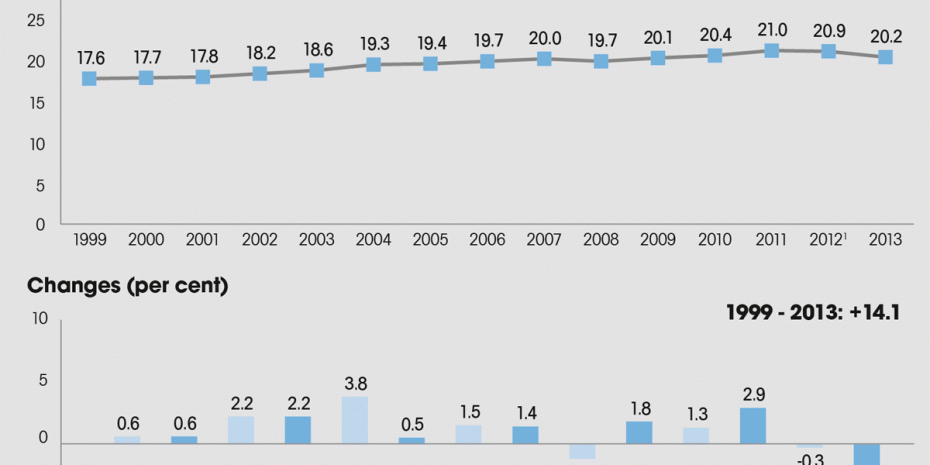Germany is a tough market for DIY store operators and their suppliers. It is described as the most competitive market in the world - but is it also a saturated market? A market is saturated when the sales achieved match the maximum possible market potential, and no further market growth is possible. This isn't an easy question to answer unequivocally. For the most part, a market is by no means completely saturated. The degree of market saturation indicates how much of the overall market potential has already been exploited. There is also no specific point at which it is possible to speak of an unsaturated market. Since DIY stores and their products are regarded as part of the market as a whole, it is necessary to refer instead to market segment saturation and thus ask how great the market volume to market potential is for this particular segment. The next problem is that market saturation can only be achieved in the case of consumer goods with a long shelf life or durables, not for short-lived consumer items. The limit on the number of electric drills per household doesn't have to be 100 per cent; it can be higher if a new, more powerful drill is procured, for example. And so a distinction would have to be drawn in the special "DIY store products" market segment according to the two criteria "long-lived" and "short-lived" in order to be able to establish definitively whether a market is saturated or not.
Spanish manufacturers increase turnover with DIY stores
In the second quarter of this year, Spanish DIY manufacturers turned over 2.36 per cent less than in the same period last …
Considered across all factors, the German DIY sector nevertheless represents a heavily saturated market. It is generally assumed that in western Europe, Japan and the USA, around 75 per cent of all sectors are affected by slow, stagnant or even negative growth. The sign of a saturated market is predatory competition, in which market share is only gained at the expense of one's competitors. Saturated markets are frequently markets that are determined by shoppers, as is also the case in Germany. In Germany, the sales of the top 20 DIY store operators increased between 1999 and 2013 by just 14.1 per cent, so by only € 200 mio a year on average. In the same period, the profitability per unit area of German DIY stores actually declined by 11.3 per cent, as the retail area increased by 23.9 per cent. Such saturated markets are often characterised by…




